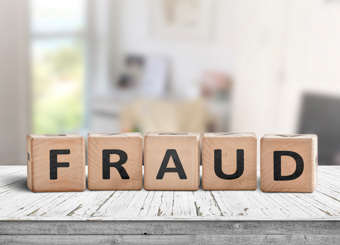Countering reimbursement fraud with enhanced expense reporting
Reimbursement fraud has emerged as a significant challenge, eroding the integrity of expense reporting processes. This deceptive practice not only impacts a company's bottom line but also undermines trust within the organization. In this context, Accounts Payable (AP) automation presents a powerful solution. By leveraging technology, businesses can enhance their expense reporting systems, making them more resilient against fraudulent activities. This blog explores how AP automation can be instrumental in preventing reimbursement fraud, safeguarding financial resources, and maintaining ethical business practices.
Understanding reimbursement fraud
Reimbursement fraud, a deceptive practice within the corporate financial landscape, involves employees making false or inflated claims for expenses. These can range from subtle exaggerations to complete fabrications. This type of fraud not only leads to direct financial losses but also erodes trust within the organization, potentially harming the company's reputation and affecting employee morale. Understanding the nature, methods, and impacts of reimbursement fraud is crucial for businesses aiming to develop effective countermeasures.
Common methods of reimbursement fraud
Reimbursement fraud in the corporate world manifests in various forms, each with its unique methods and challenges. By dissecting these methods, companies can better understand the vulnerabilities within their expense reporting systems and take targeted actions to prevent fraud. Here, we delve into the most common types of reimbursement fraud, exploring their characteristics and the red flags that can help in their early detection.
Inflated expense claims are one of the most common forms of reimbursement fraud. This occurs when employees submit claims for more than the actual cost incurred. It's a subtle form of fraud that can accumulate significant losses over time.
Common examples and red flags
- Mileage overstatements: Claiming more miles than were actually driven for business purposes.
- Upgraded accommodations: Reporting higher-end hotels or flights than were used.
- Exaggerated meal costs: Claiming expensive meals or adding extra guests to the bill.
Prevention strategies
- Implementing a standardized process for mileage tracking.
- Requiring detailed receipts for accommodation and meal expenses.
- Setting clear limits and guidelines for travel and entertainment expenses.
- Fictitious Expenses
Fictitious expenses involve claiming reimbursement for purchases or services that never occurred. This type of fraud is more blatant and often involves the creation of fake receipts or invoices.
Common examples and red flags
- Completely fabricated receipts: Submission of receipts for non-existent vendors or services.
- Altered invoices: Modifying actual receipts to inflate the expense amount.
- Recurring unknown vendors: Regular claims from vendors that are not recognized or verified.
Prevention strategies
- Verifying the authenticity of receipts and invoices.
- Cross-referencing expense claims with vendor lists and previous transactions.
- Implementing digital receipt management to reduce the risk of altered physical receipts.
This fraud involves employees disguising personal expenses as business-related. It's a direct misuse of company funds for personal benefit.
Common examples and red flags
- Personal travel: Claiming personal vacation costs as business trips.
- Non-business entertainment: Expenses for activities unrelated to work.
- Unusual expense patterns: Expenses that don't align with the employee's role or current projects.
Prevention strategies
- Requiring detailed explanations and justifications for each expense.
- Cross-checking travel dates and purposes with business schedules.
- Regularly reviewing and questioning unusual or inconsistent expense patterns.
Submitting the same expense for reimbursement more than once is a straightforward yet often overlooked form of fraud. It can occur due to either intentional deceit or unintentional oversight.
Common examples and red flags
- Multiple submissions: Submitting the same receipt across different expense reports.
- Claiming across platforms: Submitting an expense in both digital and physical formats.
- Lack of cross-referencing: Failing to check for previous reimbursements of the same expense.
Prevention strategies
- Implementing an expense management system that automatically detects duplicates.
- Regular cross-referencing of expense reports against previous submissions.
- Training employees on the importance of accurate and honest expense reporting.
The role of AP automation in preventing reimbursement fraud
Accounts Payable (AP) automation is increasingly recognized as a powerful tool in the fight against reimbursement fraud. By integrating advanced features and technologies, these systems can significantly mitigate the risk of fraudulent activities in expense reporting. Here's a closer look at how AP automation contributes to this crucial aspect of financial management.
Digital receipt management
- Streamlined receipt handling: AP automation systems digitize and store receipts, making it easier to track and verify expenses. This digital management eliminates the need for physical storage and reduces the chances of lost or manipulated receipts.
- Enhanced verification: Digital receipts can be quickly cross-referenced with expense claims, ensuring that the submitted expenses are legitimate and accurately recorded.
Automated verification processes
- Policy compliance checks: Automated systems can cross-reference submitted expenses against company policies in real-time, ensuring compliance and flagging any deviations for review.
- Anomaly detection: These systems are adept at identifying unusual expense patterns or claims that fall outside of normal parameters, alerting managers to potential fraud.
Data analytics for fraud detection
- Pattern recognition: Advanced analytics are employed to scrutinize expense reports, identifying patterns that may indicate fraudulent behavior, such as recurring suspicious claims or anomalies in spending.
- Predictive insights: Data analytics can also provide predictive insights, helping to anticipate and prevent potential fraud before it occurs by identifying risk factors and trends.
Explore Case Studies to Learn About Medius’ Expense Capabilities
Best practices in implementing AP automation for expense reporting
Implementing AP automation for expense reporting is a strategic initiative that requires careful planning and execution. Here are some best practices to ensure a successful implementation:
Selecting the right tool
Alignment with business needs: It's crucial to select an AP automation solution that aligns with your company's specific needs, size, and complexity of operations.
Feature evaluation: Evaluate the features offered by different tools, focusing on aspects like integration capabilities, user-friendliness, and the level of automation provided.
Employee training and awareness
Comprehensive training: Conduct thorough training sessions for employees to familiarize them with the new system. This includes understanding how to submit expenses, access reports, and adhere to updated policies.
Promoting ethical reporting: Educate employees about the importance of ethical expense reporting and the role of the new system in maintaining financial integrity and compliance.
Continuous monitoring and improvement
Regular system reviews: Regularly assess the effectiveness of the AP automation system in detecting and preventing fraud. This involves analyzing its performance and identifying areas for improvement.
Adaptation and upgrades: Stay updated with the latest advancements in AP automation and be prepared to adapt and upgrade the system as needed to enhance its fraud detection capabilities.
The future of expense reporting: Trends and predictions
As we look towards the future, the landscape of expense reporting is poised for transformative changes, driven by rapid technological advancements. The integration of cutting-edge technologies like Artificial Intelligence (AI), Machine Learning (ML), and advanced analytics is set to redefine how businesses manage and monitor expense reporting. These innovations promise not only enhanced efficiency but also a robust framework for fraud detection and prevention. Here's a closer look at the key trends and predictions shaping the future of expense reporting.
Artificial intelligence and machine learning
AI and ML are at the forefront of the technological revolution in expense reporting. These technologies offer sophisticated analysis capabilities, enabling systems to learn from patterns and flag anomalies indicative of potential fraud.
Key developments
- Automated receipt processing: AI-driven systems can automatically extract and analyze data from receipts, reducing manual entry and the risk of errors.
- Anomaly detection: Machine learning algorithms can identify unusual expense patterns, flagging them for further review.
- Predictive analysis: AI can predict future expense trends based on historical data, aiding in more accurate budgeting and forecasting.
Real-time expense monitoring
The shift towards real-time monitoring is a significant trend in expense reporting. This approach allows for immediate detection and response to any suspicious activities, greatly enhancing the effectiveness of fraud prevention measures.
Key developments
- Instant alerts and notifications: Real-time systems can immediately alert managers to potential fraud, allowing for swift action.
- Dynamic policy enforcement: Policies can be enforced as expenses are reported, ensuring immediate compliance.
- Continuous auditing: Ongoing, real-time analysis of expense data helps maintain constant vigilance against fraudulent activities.
Integration with broader financial systems
Future expense reporting systems are expected to be more seamlessly integrated with other financial management tools. This integration will provide a holistic view of a company's financial health and streamline various financial processes.
Key developments
- Unified financial platforms: Integration with accounting software, payroll systems, and other financial tools for a comprehensive financial overview.
- Cross-functional data sharing: Enhanced data sharing capabilities between departments to improve overall financial management and decision-making.
- Automated reconciliation: The ability to automatically match expenses with bank statements and ledgers, simplifying the reconciliation process.
Medius's role in combating reimbursement fraud
Medius offers sophisticated AP automation solutions that are pivotal in combating reimbursement fraud. Our tools are designed to provide enhanced control over expense reporting, ensuring accuracy and compliance. Partner with Medius to fortify your financial processes against fraudulent activities and steer your business towards sustainable growth.
With Medius, companies can confidently step into the future of payments, equipped with the tools and support to manage their finances with unprecedented speed and efficiency.






